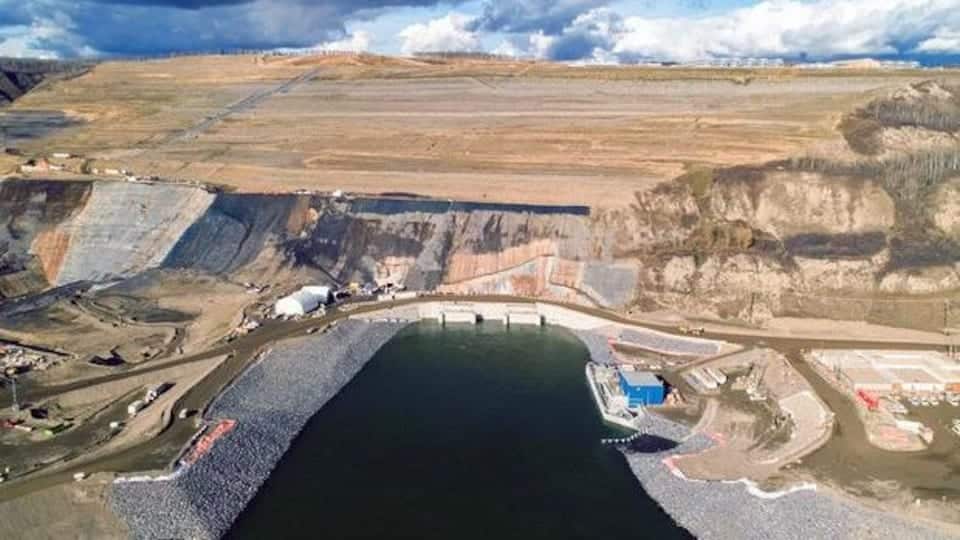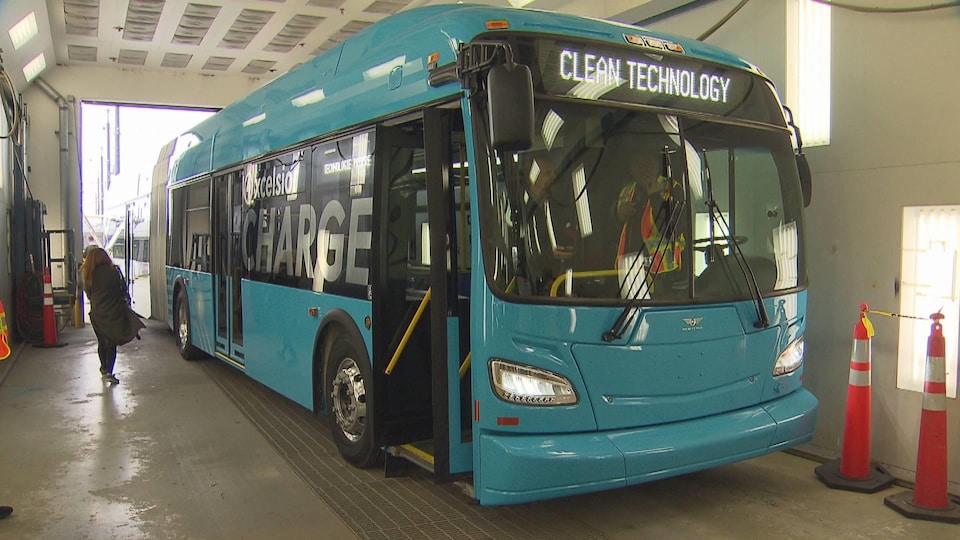Moving away from fossil fuel-generated electricity domestically is possible, says report co-author Tom Green change current : Emission-free electricity across Canada by 2035 (New window) (in English) and Senior Advisor on Climate Change at the David Suzuki Foundation.
In our scenario, zero emissions means no greenhouse gas emissions at all. We don’t use coal, natural gas or shale gas. So ‘there is no carbon dioxide going to the atmosphere
explains Tom Green.
To achieve this, Canada can rely on its hydroelectric network, which already accounts for 57% of total electricity production, but must intensify the development of wind and solar power.
According to the conclusions of the report, this requires the deployment of new structures and the acquisition of technologies to increase the storage capacities of these two sources of renewable energy.
According to the Canadian Renewable Energy Association, the largest wind and solar energy capacity built in Canada over a five-year period was 9,200 Mega Watts, between 2011 and 2015.
In the more ambitious forecast presented in the report, it would be necessary to build on average every five years more than 50,000 Megawatts of new wind and solar installations, that is to say five times the previous record.
The good news is that these technologies can already be purchased. There are vendors who are willing to sell us these production sources. But also that the price of these technologies has dropped so much in the last decades that it is now the most affordable energy in history, as the International Energy Agency has said.
emphasizes Tom Green.
Due to the uncertain nature of the production of electricity from wind turbines, solar panels or hydroelectric dams, which remains dependent on weather conditions, the report suggests establishing a policy of cooperation and interprovincial exchange of electricity. own.
British Columbia, whose electricity is more than 90% hydroelectric, could supply Alberta and Saskatchewan, which have far fewer possibilities in this field, but which have more potential to produce electricity. wind and solar energy
argues Tom Green.
According to the report, switching to 100% renewable electricity would represent more than 27% of the total reductions in GHG necessary to achieve Canada’s carbon neutrality goals. That is a total saving of 3.2 billion tonnes of CO equivalent2 between 2025 and 2050.
Social and economic gains
Experts also claim that emission-free electrification would benefit the economy. It is expected to generate 75,000 jobs per year on average by 2050
says Tom Green.
Furthermore, a note in a complementary report insists on the fact that the decarbonisation of electricity goes through the decolonization of power and ensuring that the benefits accrue to indigenous communities
.
The scenarios we’re talking about, with so much wind power and solar power, are only going to work if [les Premières Nations] have permission to put these projects in their territories and if they participate in an economic way as
says Tom Green.
The projections also count on the end of investments in nuclear power and on the green electrification of residential and commercial buildings.
Consumers and businesses also benefit from efficiency gains made when clean electricity replaces fossil fuels, such as when a natural gas boiler is replaced with a high-efficiency electric heat pump.
explains Tom Green.
The electrification of the transport sector, the second largest emitter of greenhouse gases, does however come with challenges.
Replacing the car fleet with zero-emission vehicles, supported by incentive policies, raises the question of the environmental cost of extracting and recycling the materials needed to make the batteries.
This is something that we have looked at in other work at the foundation and we know that of course there are good and bad methods of obtaining the lithium and the other materials that we need for this transformation
continues Mr. Green
We encourage methods that have much less impact on the environment
he continues. But the other thing you have to understand is that once you have that battery, those materials will be used in the economy for decades to come because you can recycle them, reuse them
concludes Tom Green.
Reference-ici.radio-canada.ca

